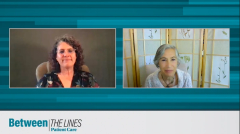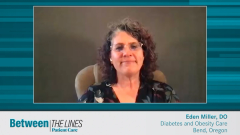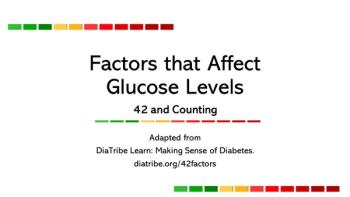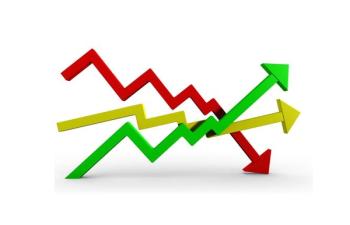
Overview of Data Outcomes in Diabetes Study
Elizabeth Holt, MD, FACE and Eden Miller, DO, review glycemic data over a 90-day and 180-day period in patients with diabetes.
Episodes in this series

Elizabeth Holt, MD, FACE: Let’s first look at the changes in blood glucose readings and ranges across the 2 examined data sets. Focusing first on the 90-days data, we can see that mean glucose decreases in both people with type 1 diabetes and people with type 2 diabetes along with an increase in the percentage of their readings in range. There’s a parallel decrease in the percent readings in the hyperglycemic range, importantly with no clinically relevant increase in the percent readings in the hypoglycemic range. Dr Miller, are the magnitudes of these changes seen clinically meaningful in your experience, in your practice?
Eden Miller, DO: Exceedingly meaningful. It wasn’t that long ago when there was a European study that came out that said monitoring your blood sugar didn’t affect your overall glucose control in terms of your A1C. I think it’s because we haven’t given that data meaning. I found this particular study quite impactful for many reasons because of both the utility for type 1 and type 2 diabetes. That really resonates in my world. Those are different individuals with different types of things they bring to the table, including glycemic variability and risk of hypoglycemia, but not to underestimate the needs of those with type 2 diabetes, as well. What I found that was so very striking about this trial is that they were still checking their blood sugar like they typically do. They weren’t doing anything different, but it was how the data were placed into that system—how it was able to be viewed. What this application seems to do is to really give the data meaning and in giving it meaning, then it empowers the patient to make changes. This was very patient-forward. This was really in the hands of the user and I was quite impressed by this particular outcome. I’ll be honest with you, it was a little unexpected. I didn’t realize that by giving that meaning through the app to the glucose sensing by blood glucose levels that we could see that kind of improvement.
Elizabeth Holt, MD, FACE: I think it’s noteworthy to point out that the frequency of blood glucose checks did not increase at 90 days. The glycemic improvements seen were not the result of more frequent blood glucose monitoring. Dr Miller, what do you think contributed to the glycemic outcomes?
Eden Miller, DO: When I look at the data, it’s independent of the amount of testing. It’s not as if they doubled their testing. In fact, as I see in that data, there were a couple of instances where the testing went down ever so slightly. Let’s just call it the same. I think what it was is just the application. You have a pretty true study pulling out those variables that they themselves eliminated and it really became that Bluetooth-connected meter. They didn’t have to sit there and put it in. They didn’t have to do that. There wasn’t an increased work burden. But it allowed for that data to be transmitted. Then, it also allowed for the individual to maybe look at that retrospectively or during the time. I also noticed that they weren’t really looking at it at a very high level and I thought there’s got to be something to this meter with this Bluetooth connectivity to this application which is giving these patients those tools that they need.
Elizabeth Holt, MD, FACE: Now let’s look at the 180-days data to see if those changes are sustained from the 90-day data. Again, we see that there are decreases in the mean glucose, increases in the percentage of readings in range, and decreases in the percent of readings in the hyperglycemic range for both people with type 1 and people with type 2 diabetes—again, without a clinically relevant increase in the percent of readings in the hypoglycemic range. Dr Miller, can you comment on the clinical importance of these 2 examined data sets at 90 and 180 days? Are the data from 180 days showing sustained positive glycemic benefits for this amount of time of greater clinical importance to you as a clinician?
Eden Miller, DO: What you’re really talking about, Dr Holt, is called durability. Imagine if the 90-day data were compelling and then it all reverted to baseline at 180 days. We’d say it was a one and done. A little firework and it was great. Instead, we’re seeing what’s called durability or persistence. That’s what we’re looking for in diabetes. Like we said, it’s this longitudinal marathon that these individuals are having. Sometimes something new and novel will create a splash and then later doesn’t seem to hold the muster as it continues through the course of their disease. I like how they looked at the 90- and 180-day mark because it was very confirmatory to say that the person was still benefitting from that ongoing engagement in that Bluetooth-connected data through that app. I liken that other dataset as more of a confirmatory of the 90-day.
Transcript edited for clarity
Newsletter
Enhance your clinical practice with the Patient Care newsletter, offering the latest evidence-based guidelines, diagnostic insights, and treatment strategies for primary care physicians.































































































































































































































































































